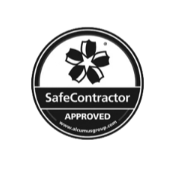Air quality is something that we’ve all been paying a bit more attention to lately. The COVID-19 outbreak has made us much more aware of airborne bugs and pollutants, and how they can concentrate in indoor settings. As businesses and public buildings start to re-open, indoor air pollution has been shunted to the top of every facilities manager’s list as they consider an air quality strategy that will protect employees, customers and visitors alike.
With an arsenal of air care products and services geared at increasing ventilation and improving air quality at your workplace or leisure venue, phs is your ideal partner in the fight against indoor air pollution. Air cleaners and air purifiers, and our highly effective Biozone and AERAMAX units can all help the clean air cause.
All employees have a right to work in an environment where the ambient air is free from pollutants.
Indoor air pollution effects
At the height of the pandemic, we’ve all been urged to wear face masks inside buildings as airborne germs gather where there is little ventilation. Colds, flu, measles, mumps, TB and, of course, COVID are all examples of illnesses that are transmitted through the air.
These illness-inducing bugs or biological pollutants, which also include pollen, dust and animal hair, are just one of 4 different classes of indoor air pollution. Volatile organic compounds (VOCs) emitted by paints, cleaning supplies, adhesives, photocopiers and printers; combustion by-products, such as carbon monoxide, nitrogen dioxide and sulphur dioxide which are given off from burning fuel; and legacy pollutants, that occur in lead paint, old strip lighting and asbestos, all contribute to poor indoor air quality.
Many of these materials were not thought to be dangerous when first used but various studies have since produced indoor pollution facts that their presence does in fact lower indoor air quality. As such, they can lead to devastating health problems as well as everyday inhibitions to daily activities, such as eye or skin irritation, tiredness or inability to concentrate.
Existing conditions, such as asthma or COPD can be exacerbated by indoor air pollution which, according to air pollution facts, can increase the risk of heart disease and cause lung cancer or pneumonia.
Fighting poor indoor air quality
Ventilation and air cleaner systems using HEPA filters, UV light, and natural fragrances can remove many of these pollutants, making indoor air altogether more pleasant to breath, less likely to aggravate allergies or sensitivities and no longer detrimental to health. When air quality is good, staff concentration and productivity levels increase, absence rates reduce and morale is better.
phs air purification units are proven to reduce indoor air pollution, successfully removing up to 99.99% of bugs, including those causing COVID.
Biozone – 24-hour air purification system for the treatment of surface and airborne bacteria and odours with UV light and purifying plasma. Completely chemical free.
AERAMAX – a range of different units to suit all environments and room sizes. The antimicrobial HEPA filter works effectively to remove odours and particulates from the air with some units equipped to display live air quality data.
Air conditioning and ventilation units – Planned maintenance ensures that your air conditioning and heating systems are working efficiently and not releasing harmful fluorinated refrigerant gases or Legionnellosis bacteria.
The servicing of air care equipment is an important part of your air quality strategy. phs will look after air cleaner and ventilation units to ensure that air filters are changed, fragrances are refilled and UV lights are working effectively. For your peace of mind and Health and Safety documentation, after every service, you’ll receive an immediate automated email confirming details of the products and location serviced.
Speak to phs today to discover how to improve and maintain the indoor air quality at your workplace.

































